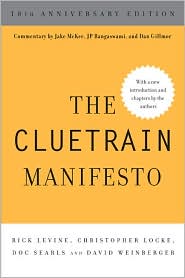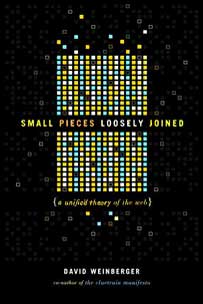April 14, 2015
[shorenstein] Managing digital disruption in the newsroom
David Skok [twitter:dskok] is giving a Shorenstein Center lunchtime talk on managing digital disruption in the newsroom. He was the digital advisor to the editor of the Boston Globe. Today he was announced as the new managing editor of digital at the Globe. [Congrats!]
|
NOTE: Live-blogging. Getting things wrong. Missing points. Omitting key information. Introducing artificial choppiness. Over-emphasizing small matters. Paraphrasing badly. Not running a spellpchecker. Mangling other people’s ideas and words. You are warned, people. |
As a Nieman fellow David audited a class at the Harvard Business School taught by Clay Christensen, of “creative destruction” fame. This gave him the sense that whether or not newspapers will survive, journalism will. Companies can be disrupted, but for journalism it means that for every legacy publisher that’s disrupted, there are new entrants that enter at the low end and move up market. E.g., Toyota started off at the low end and ended up making Lexuses. David wrote an article with Christensen [this one?] that said that you may start with aggregation and cute kittens, but as you move up market you need higher quality journalism that brings in higher-value advertising. “So I came out of the project doubly motivated as a journalist,” but also wanting to hold off the narrative that there is an inevitability to the demise of newspapers.
He helped started GlobalNews.ca and got recruited for the Globe. There he held to the RPP model: the Resources, Process, and Priorities you put in place to help frame an organizational culture. It’s important for legacy publishers to see that it isn’t just tech that’s bringing down newspapers; the culture and foundational structure of those organizations are also to blame.
Priorities:
If you take away the Internet, a traditional news organization is a print factory line. The Internet tasks were typically taken up by the equivalent groups with in the org. Ultimately, the publisher’s job is how to generate profit, so s/he picks the paths that lead most directly to short-term returns. But that means user experience gets shuffled down, as does the ability of the creators to do “frictionless journalism.” On the Internet, I can write the best lead but if you can’t read it on your phone in 0.1 seconds, it doesn’t exist. The human experience has to be the most important thing. The consumer is the most important person in this whole transaction. How are we making sure that person is pleased?
In the past 18 months David has done a restructuring of the Globe online. He’s been the general mgr of Boston.com. Every Monday he meets with all the group leads, including the sales team (which he does not manage for ethical journalism reasons). This lets them set priorities not at the publisher level where they are driven by profit, but by user and producer experience. The conceit is that if they produce good user and producer experiences, the journalism will be better, and that will ultimately drive more revenue in advertising and subscriptions.
The Globe had a free site (Boston.com) and a paywall site (bostonglobe.com). This was set up before his time. Boston.com relative to its size as a website business has a remarkable amount of revenue via advertising. BostonGlobe.com is a really healthy digital subscription business. It has more subscriptions in North America outside of the NYT and WSJ. These are separate businesses that had been smushed together. So David split them up.
Processes:
They’ve done a lot to change their newsroom processors. Engineers are now in the newsroom. They use agile processes. The newsroom is moving toward an 18-24 hour cycle as opposed to the print cycle.
We do three types of journalism on our sites:
1. Digital first — the “bloggy stuff.” How do we add something new to those conversations that provides the Globe’s unique perspective? We don’t want to be writing about things simply because everyone else is. We want to bring something new to it. We have three digital first writers.
2. The news of the day. We do a good job with this, as demonstrated during the Marathon bombing.
3. Enterprise stuff — long investigations, etc. Those stories get incredible engagement. “It’s heartening.” They’re experimenting with release schedules: how do you maximize the exposure of a piece?
Resources:
In terms of resources: We’re looking at our content management system (CMS). Ezra Klein went to Vox in part because of their CMS. You need a CMS that gives reporters what they need and want. We also need better realtime analytics.
Priorities, Processes + Resources = organizational culture.
Q&A
Q: You’re optimistic…?
A: We’re now entering the third generation of journalism on line. First: [missed it]. Second: SEO. Third: the social phase, the network effect. How are we engaging our readers so that they feel responsible to help us succeed? We’re not in the business of selling impressions [=page views, etc.] but experiences. E.g., we have a bracket competition (“Munch Madness“) for restaurant reviews. We tell advertisers that you’re getting not just views but experiences.
Q: [alex jones] And these revenues are enough to enable the Globe to continue…?
A: It would be foolish of me to say yes, but …
Q: [alex jones] How does the Globe attract an audience that’s excited but civil?
A: Part of it is thinking about new ways of doing journalism. E.g., for the Tsarnaev trial, we created cards that appear on every page that give you a synopsis of the day’s news and all the witnesses and evidence online. We made those cards available to any publisher who wanted them. They’re embeddable. We reached out to every publisher in New England that can’t cover it in the depth that the Globe can” and offered it to them for free. “We didn’t get as much uptake as we’d like,” perhaps because the competitive juices are still flowing.
Then there are the comments. When news orgs first put comments on their site, they thought about them as digital letters to the editor. Comments serve another purpose: they are a product and platform in and of themselves where your community can talk about your product. They’re not really tied to the article. Some comments “make me weep because they’re so beautiful.”
Q: As journalists are being asked to do much more, what do you think about the pay scale declining?
A: I can’t speak for the industry. The Globe pays competitively. We’re creating jobs now. And there are so many more outlets out there that didn’t exist five years ago. Journalists today aren’t just writers. They’re sw engineers, designers, etc.
I’m increasingly concerned about the lack of women engineers entering the field. Newspapers have as much responsibility as any other industry to address this issue.
Q: How to monetize aggregators?
A: If we were to try to go to every org that aggregates us, it’d be a fulltime job. We released a story online on a Feb. afternoon about Jeb Bush at Andover. [This one?] By Friday night, it was all over. I don’t view it as a threat. We have a meter. My job is to make sure that our reporting is good enough that you’ll use your credit card and sign up. I’m in awe in the number of people who sign up every day. We have churn issues as does everyone, but the meter business has been a success.
Q: [me] As you redo your CMS, have you thought about putting in an API? If so, would you consider opening it to the public?
A: When I’ve opened up API sets, there has been minimal takeup.
Q: What other newspapers are doing a good job addressing digital issues? And does the ownership structure matter?
A: The Washington Post, and they have a very similar ownership structure as the Globe.
Q: [alex] What’s Bezo’s effect on the WaPo?
A: Having the Post appear on every Kindle is something we’d all like for ourselves.
Q: Release schedule?
A: Our newsroom’s phenomenal editors are recognizing and believing that we are not a platform-specific business. We find only one in four of our print subscribers logged on to the web site with any frequency. We have two different audiences.We’ve had no evidence that releasing stories earlier on digital cannibalizes our print business. I love print. But when I get the Sunday edition, I feel guilty if I recycle it before I’ve read it all. So why not give people the opportunity to read it when they want? If it’s ready on a Wed., let them read it on Wed. Different platforms have different reader habits.
Q: What’s native to the print version?
A: Some of the enterprise reporting perhaps. But it’s more obvious in format issues. E.g., the print showed the 30 charges Tsarnaev was charged with. It had an emotional impact that digital did not.
Q: Is your print audience entirely over the age of 50?
A: No. It’s a little older than our overall numbers, but not that much.
Q: What are you doing to reduce the churn rate? What’s worked on getting print and digital folks to understand each other?
A: I’m a firm believer in data. We’re not pushing for digital change because we want to but because data backs up our claims. About frictionlessness: It’s so easy to buy goods. Uber. Even buying a necklace. We’re working with a backend database that is complex. We have to tie that into our digital product. The front end complexities on how users can pay come from the complexity of the back end.
Q: [nick sinai] I appreciate your comments about bringing designers, developers, UX into the newsroom. That’s what we’re trying to do in the govt. for digital services. How about data journalism.
A: Data journalism lets you tell stories you didn’t know where there. My one issue: We’ve reached a barrier: we’re reliant on what datasets are available.
Q: How many reporters work for print, Boston.com, and BostonGlobe.com
A: 250 journalists or so work for the Globe and they all work for all platforms.
Q: Are different devices attracting different stories? E.g., a long enterprise story may do better on particular devices. Where is contradiction, nuance, subtlety in this environment? How much is constrained by the device?
A: Yes, there are form-specific things. But there are also social-specific things. If you’re coming from Reddit, your behavior is different from your behavior coming from Facebook, etc. Each provides its own unique expectation of the reader. We’re trying to figure out how to be smarter in detecting where you’re coming from and what assets we should serve up to you. E.g., if you’re coming from Reddit and are going back to talk about the article, maybe you’re never going to subscribe, but could we provide a FB Like button, etc.?
Q: Analytics?
A: The most important metric for me is journalistic impact. That’s hard to measure. Sheer number? The three legislators who can change a law? More broadly: At the top of the funnel, it’s how to grow our audience: page views, shares, unique visitors, etc. As you get deeper into the funnel it’s about how much you engage with the site: bounce rate, path, page views per visit,time spent, etc. Third metric: return frequency. If you had a really good experience, did you come back: return visits, subscribers, etc.
[Really informative talk.]









